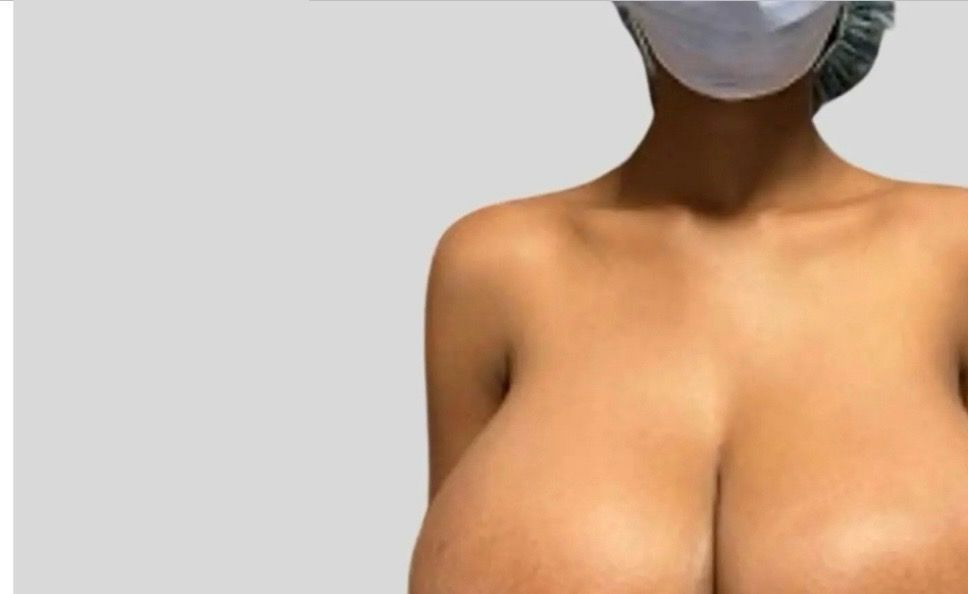From Accidents to Icons: A Discovery on Par with Viagra?
The history of medicine is a tapestry of brilliance—but some of its most transformative chapters began not with intention, but with accidents that flirted with destiny.
Take Viagra. Originally developed to treat hypertension, it failed to meet cardiovascular goals—until male patients began reporting a rather persistent and, shall we say, unexpected benefit. What began as a pharmaceutical flop became a cultural icon, a billion-dollar blockbuster, and a new pillar of male aging.
Now, consider our 19-year-old girl. No surgeon mapped her body’s transformation. No hormone therapy was prescribed. No biotech firm predicted it. Yet her breast tissue grew with such symmetry, localization, and elegance it mimicked surgical precision—without a single incision.
Just as Viagra’s failure became a triumph, her experience may be the first real-world whisper of a future that redefines how we interact with our biology—not just to survive, but to transform.
The Medical Finding: Unusual, Undeniable, Uncharted
Upon medical examination, her tissue was found to display a rare benign condition: Pseudoangiomatous Stromal Hyperplasia (PASH)—a known but seldom-seen response where breast stroma proliferates abnormally. Typically slow-growing and asymptomatic, PASH had never been seen with such sudden onset, and certainly not in the context of mRNA vaccination.
Yet here it was: a highly localized, aesthetic-grade tissue response, echoing an ideal many spend years and fortunes attempting to attain through implants or hormonal regimens.
Coincidence? Possibly. But a scientific nudge worth heeding? Absolutely.
Enter Dr. Mark Klotter: The Maestro of Cell Programming
To understand why this event may be more than a fluke, we turn to the visionary work of Dr. Mark Klotter, a rising pioneer in the field of cellular programming—a discipline that doesn’t just study what cells do, but what they can be told to do.
Klotter’s research proposes that cells are not just biological machines, but programmable agents, responsive to molecular “instruction sets” delivered through transient messengers like mRNA. It’s the same technology that enabled COVID-19 vaccines—but he envisions far broader applications.
In lectures that have captured both the medical elite and wide-eyed undergraduates, Klotter outlines a future in which the human body becomes a living, self-editing sculpture—able to remodel fat, restore youth to skin, stimulate natural muscle tone, or, in theory, grow tissue to aesthetic ideals, all without scalpels or silicon.
In short: Viagra unlocked blood flow. This may unlock biology’s source code.
⸻
Programmable Aesthetic Regeneration: A Future Whispered in Flesh
What this young woman experienced might not have been just a side effect—it could have been a preview. A glimpse of how the body, when prompted by mRNA or other synthetic guides, might reconfigure itself with remarkable accuracy.
Could this be the dawn of programmable aesthetic regeneration?
Not enhancement through additives—but transformation from within.
The parallels with Viagra are uncanny:
•Neither discovery was the original goal.
•Both unlocked hidden potential within human biology.
•Both redefined what the human body could achieve—and who has the agency to choose.
But while Viagra’s triumph lay in the realm of performance, this new possibility lives in the realm of form, harmony, and structural beauty—sculpted not in surgery rooms but in cell nuclei.
From One to Many: Listening to the Outliers
It’s easy to dismiss such cases as anomalies. But medicine’s greatest advances have often emerged from the fringes—from those one-in-a-million reactions that illuminate the capabilities hiding beneath our everyday biology.
This young woman’s body orchestrated a transformation so specific, so biomechanically beautiful, that it compels us not to recoil in mystery—but to lean in with curiosity.
After all, if this occurred naturally, what might we achieve deliberately?
Why This Matters: Beauty, Biology, and Choice
This is not about vanity. It’s about agency. The ability for people to work in harmony with their biology, to refine and restore, not through invasive procedures or synthetic implants, but by asking their own cells to do what they already know how to do—just more elegantly, more purposefully, more beautifully.
It’s not just about breasts. It’s about empowerment, regeneration, and a future where form follows programmable function.
Imagine a world where:
•A dancer rejuvenates her tendons without surgery.
•A burn victim regrows skin indistinguishable from the original.
•A person sculpts their physique through molecular messages rather than months of strain.
Her case, then, is not a footnote. It is a prologue.
A Rare Spark in the Vast Sky of Human Possibility
We may never know exactly why her body responded as it did. But in the grand arc of human scientific progress, there are moments that don’t just stand out—they change direction.
This could be one.
A biological ripple born from a vaccine injection, reverberating through the future of aesthetic medicine, cellular self-renewal, and the very notion of what a body can be.
⸻
One in a billion? Perhaps. But more importantly—one for the future.
Because sometimes, the body writes a story we never saw coming. And sometimes, if we’re wise enough to read it, it leads us to chapters beyond imagination.

